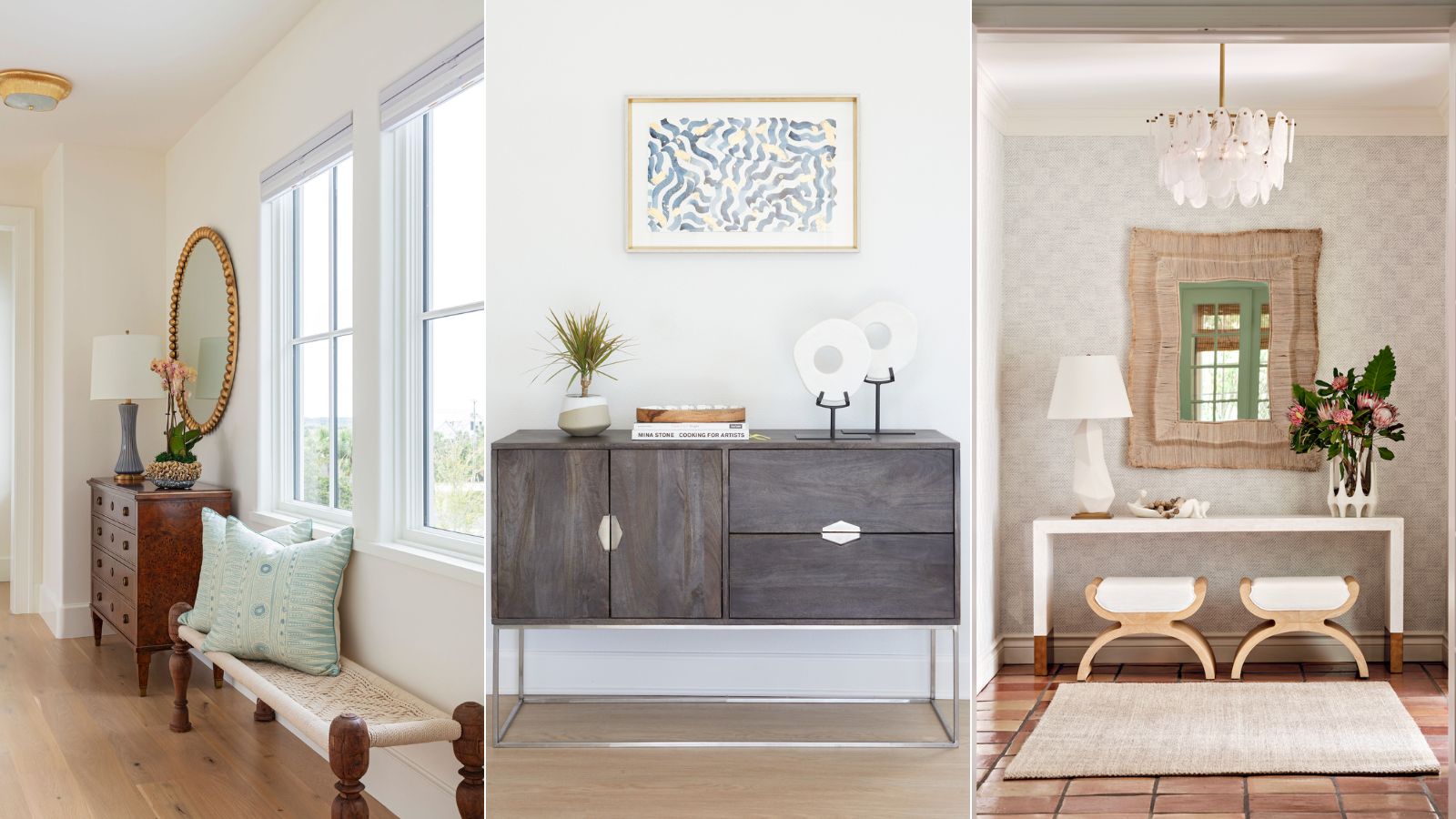
Coastal interiors, defined by earthy materials and calming colors, are on the rise once again, and for good reason – even when miles from the nearest coast, bright and beachy spaces instantly transport us to a state of relaxation.
When curating a coastal-inspired home, the entryway is an important place to get the look down, setting the tone for the entire space. But coastal decor isn't always as simple as it sounds. Too many ocean motifs can send a space into a kitschy spiral, but you'll need a bit of beach to channel the coastal aesthetic.
We spoke with interior designers to get their top tips for finding a tasteful balance within coastal decor, creating entryways that feel fresh and inviting. This is how the experts create glowy, gorgeous coastal entryways, letting the beachy atmosphere in at the front door.
7 chic but cozy coastal entryway ideas
Embracing the coastal aesthetic will leave you with an airy, alluring entryway that's both beautiful and functional. A lovely welcome back after a beach adventure, or (more likely) a day out at work, your entryway will be sure to instantly calm with soothing shades and natural textures.
1. Evoke the great outdoors
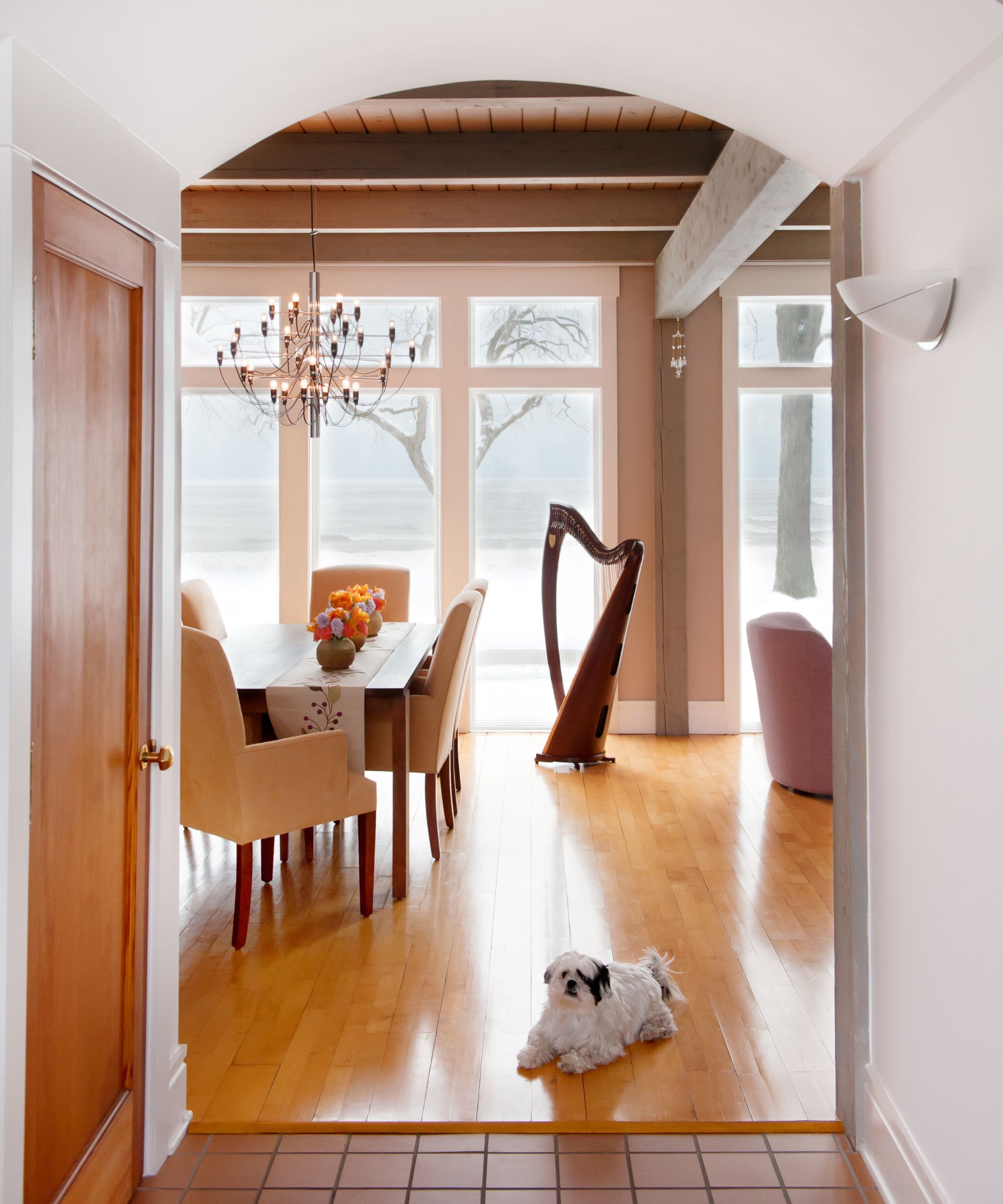
Coastal style draws from the great outdoors, so centering natural elements in the entryway is key. Elizabeth Drake, principal designer of her eponymous design studio, says the entryway should complement outdoor scenery – even when it's not quite beach weather.
'A good "coastal entry" leads the eye out to the view of the water – I find an arched entry framing the water view to be a compelling design element. Even winter snow on the lake is worthy of framing,' she says.
Elizabeth adds that design elements should 'harmonize with the water views' instead of 'taking over with peppy colors.' She brings the outdoors into the space by using sunrise-inspired hues and organic, natural materials like grasscloth and slate tile.
Kathy Kuo, interior designer and CEO of Kathy Kuo Home, says coastal-style entryways that integrate environmental elements 'echo the calm feeling of spending time by the ocean' – a feeling that truly can't be beat. She suggests introducing entryway furniture like console tables and benches in textural, organic materials like 'jute, rattan, seagrass and driftwood.'
'These natural materials will make the entryway feel instantly coastal-chic, and you can go even further by styling your entry console with items like oversized seashells and coral and woven trays or baskets,' says Kathy.
2. Embrace a coastal color scheme
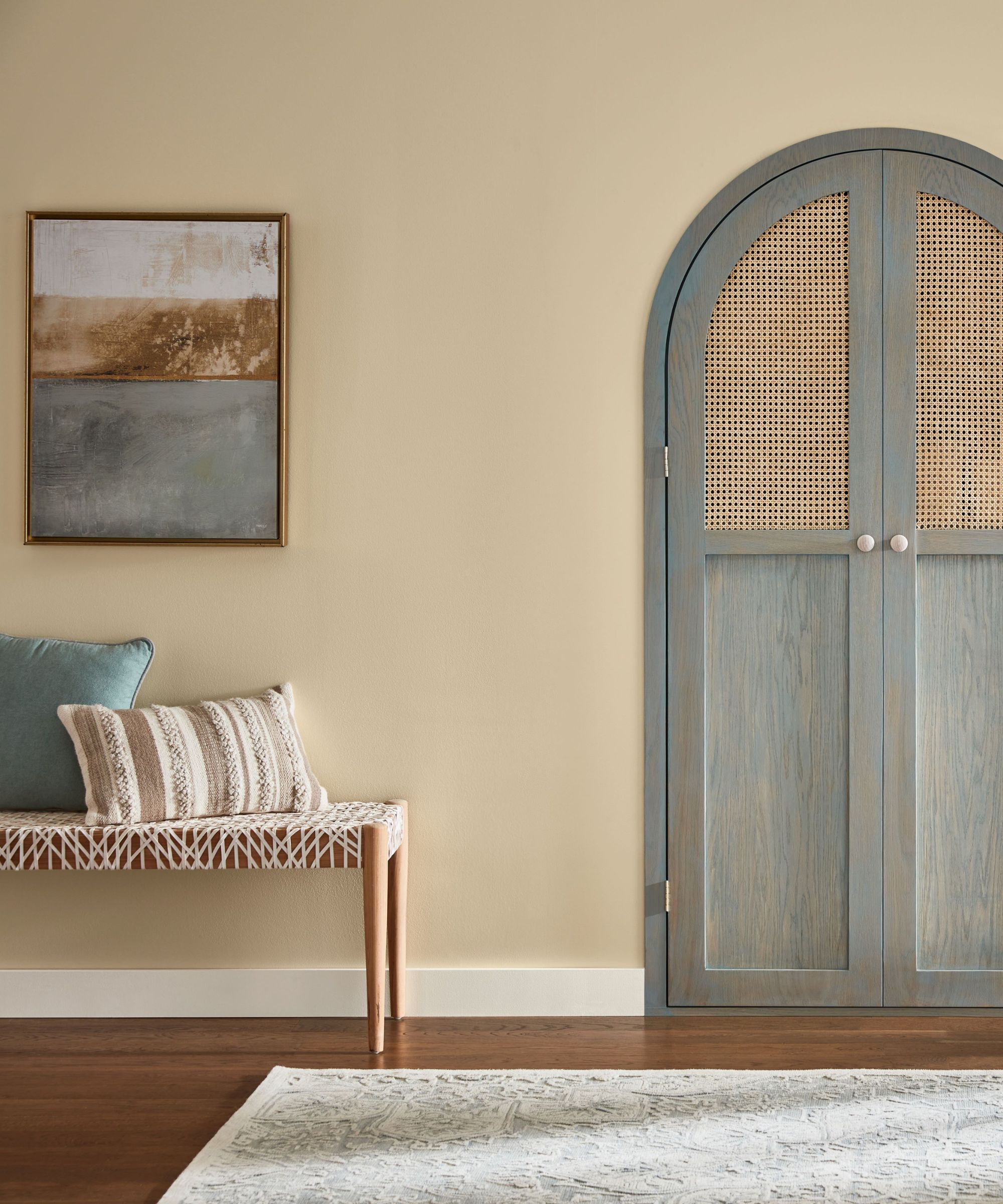
Along with natural elements, designers suggest bringing in color schemes that draw from the outdoors. Though the coastal color palette can quickly become a bit over-the-top with bright blues and harsh whites, pulling tones straight from nature can ease the overwhelm. Lauren Kavanaugh, art director at wallpaper brand Hovia, says that shades 'reminiscent of a coastal environment' work best for entryways.
'Blues, greens, soft neutrals, sandy yellows and warm white paints all contribute to the theme effectively. Incorporate color subtly with abstract wallpaper designs, especially those featuring gentle, washy watercolor brushstrokes reflecting the changing tones and forms of the tide,' says Lauren.
Sue Kim, director of color marketing at Minwax and Valspar, says she expects coastal style will continue to top the interior design trends in 2024. She adds that the aesthetic 'draws upon natural, recycled materials,' leading people to desire more subtle, gentle hues. This also aligns with a trending desire for spaces that feel calm and tranquil.
'For many people, recycled materials have come to be associated with a distressed, mulchy surface effect which, when translated to color, is very desaturated and soft. These desaturated colors fit the attitude of being one with nature and sit well next to a variety of other colors,' says Sue.
Sue suggests Minwax's Oyster Gray, Gentle Olive, Silvered Gray, Vintage Blue and White Wash finishes for classic hues that will make a coastal entryway shine. If you're after a 'white wash look,' she notes that a 'barely-there wood stain' makes a room feel more beachy, adding rustic charm and character in an instant.
3. Let in natural lighting
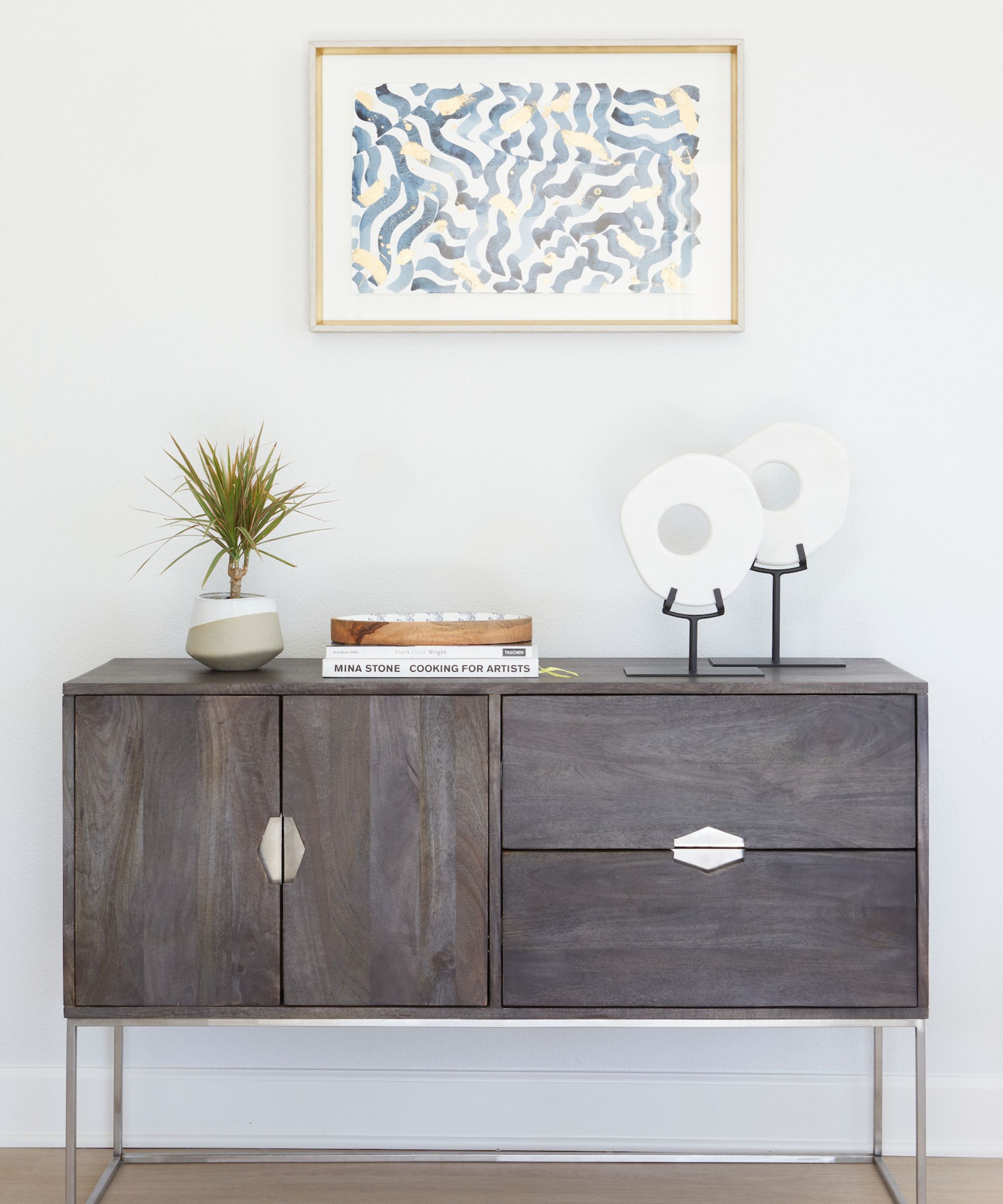
Embrace the sun-drenched, airy coastal atmosphere in your entryway by letting all the natural light in. Lauren suggests leaving windows and doors unobstructed so as to facilitate natural lighting, and to 'add cleverly positioned entryway mirrors to maximize feelings of space and openness.'
Emily LaMarque, owner of Emily LaMarque Design Studio, agrees, saying the 'trick to designing a coastal entryway is to keep the space feeling light and airy.' She suggests a comfortable bench with basket storage, or a console table that fits the aesthetic. For the rest of the room, she tries to channel lightness and levity in the patterns and materials she chooses.
'When selecting furnishings, think neutral and natural materials like wood, wicker, seagrass and jute, and opt for slightly weathered materials over anything too refined or polished. Bring in textiles with a casual pattern – a pale stripe or a subtle neutral print can be both subtle and elevated – and go for lightweight linen fabrics on window treatments and upholstery rather than anything too heavy or that will block too much light,' says Emily.
4. Ensure your space is weather-resistant
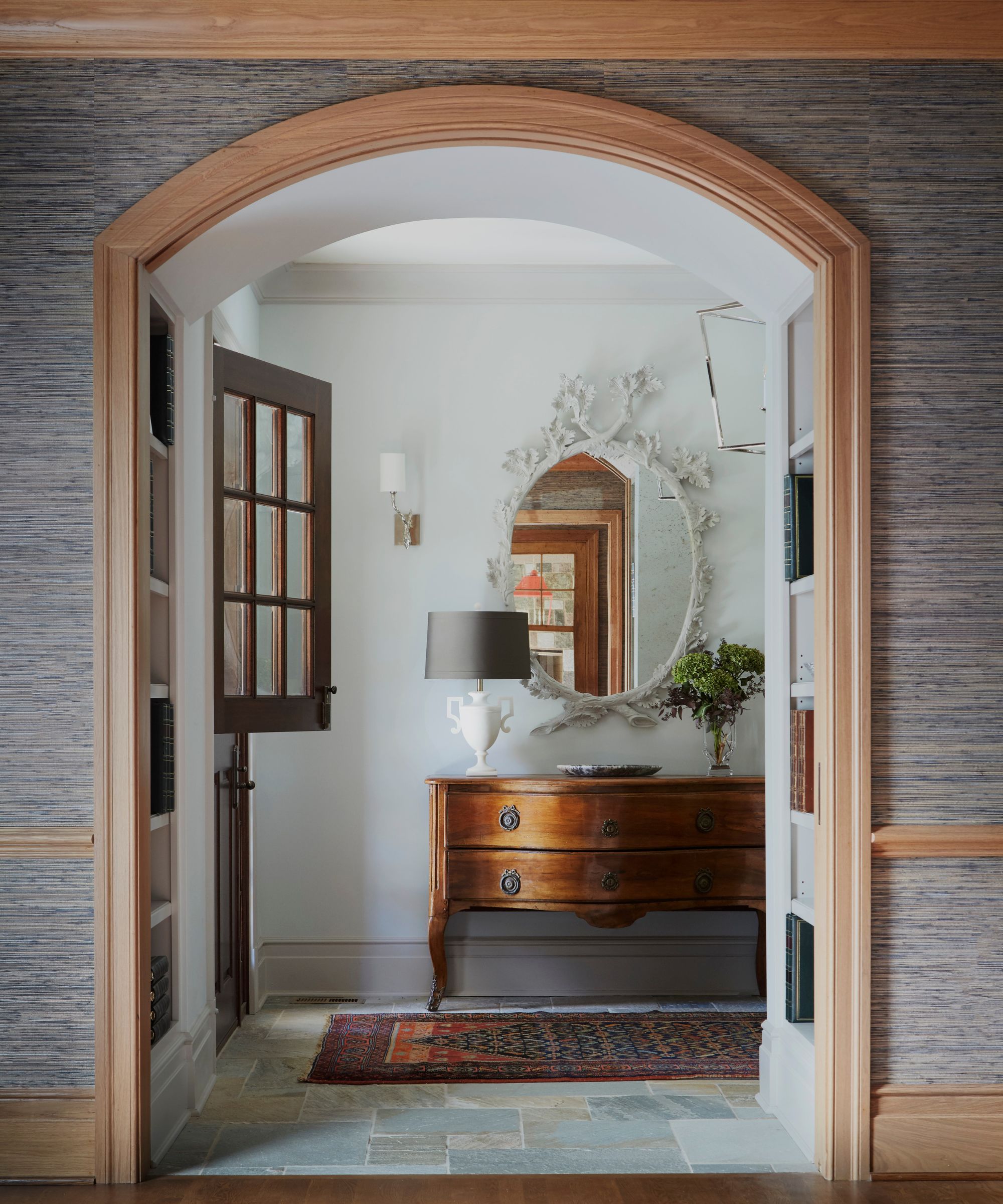
A coastal space won't last long if it's not equipped for its natural environment, so designing with this in mind is paramount. Elizabeth Drake says she likes integrating entryway rugs with intricate patterns to 'camouflage and grab the sand and debris that tracks in from the lake' – an experience that's all too familiar for her clients living on the coast of Lake Michigan.
'I especially like using vintage Persian rugs for their heavy weight and durability, providing that no-stress feeling as the children come inside all wet and sandy. A quick shake of the rug outside cleans it up,' she says.
In this coastal entryway, Elizabeth also opted for a durable floor tile to double down on the space's long-lasting appeal. 'The blue-green slate floor provides the harmonious color palette, and can’t be scratched up from sand or stained by water,' she adds.
5. Leave room for imperfection
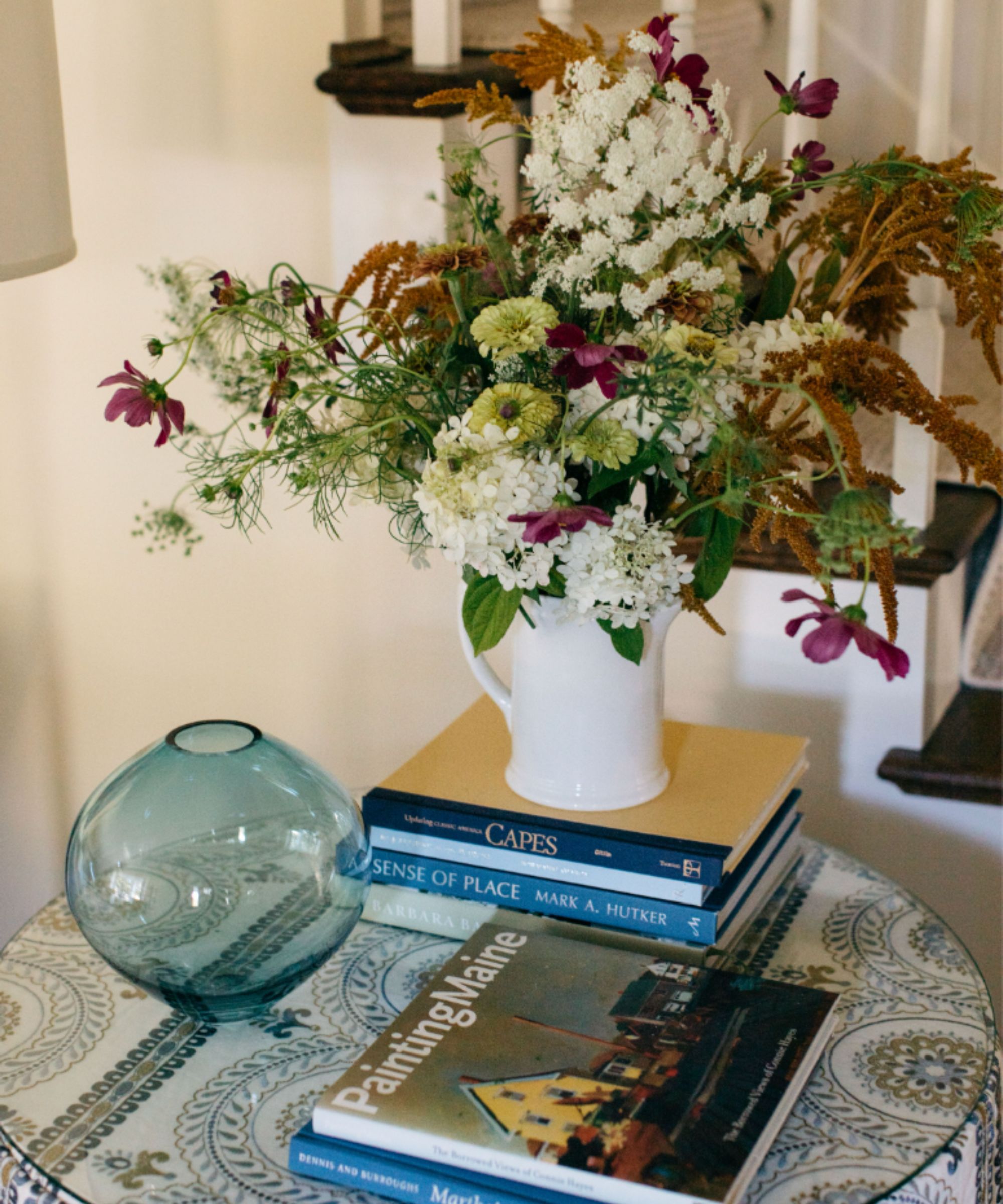
Part of a coastal home's beauty is the slightly rustic look that comes with taking inspiration from the outdoors. Lauren suggests leaning into imperfection when designing an entryway space in this style.
'When styling a coastal entryway, look for natural materials full of beautiful imperfections; pale or white-washed woods on furniture, seagrass or jute runner rugs, and linen fabrics all work well. Dried reeds, grasses and flowers in hand-crafted ceramic vases are also a modern take on the style. Driftwood and shells are a more direct interpretation of the style and work when used sparingly,' she says.
Lauren adds that biophilic- and artisanal-inspired styles are on trend, and says coastal design offers 'a refreshing way to incorporate natural tones, textures and materials into the home.'
6. Introduce modern accents
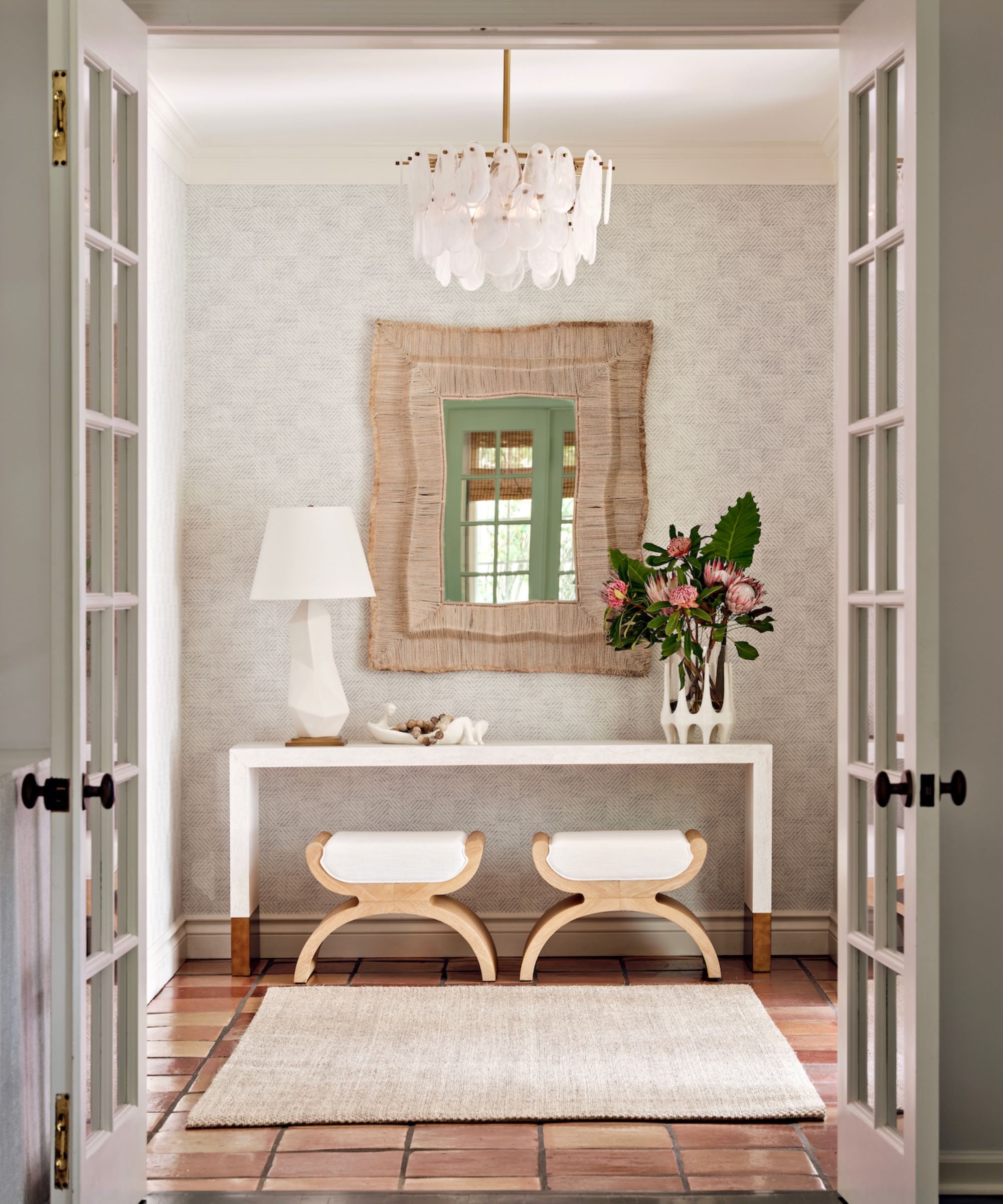
Coastal style has been around for quite some time, so it's no surprise that some of its spaces feel dated. Rayana Schmitz, founder and principal designer of Florida-based Firefinish Interiors, says she makes the coastal look more contemporary by introducing clean lines and sculptural elements into the space.
'To modernize the coastal vibe, I add sculptural pieces that serve as focal points, blending art with functionality. A hint of blue brings in the tranquility of the sea, completing the look. It's about creating a space that's inviting and evokes a sense of calm the moment you step through the door,' says Rayana.
In this entryway, Firefinish Interiors mastered a modern take on coastal decor by incorporating streamlined seating and a unique, textured mirror.
7. Steer clear of kitsch
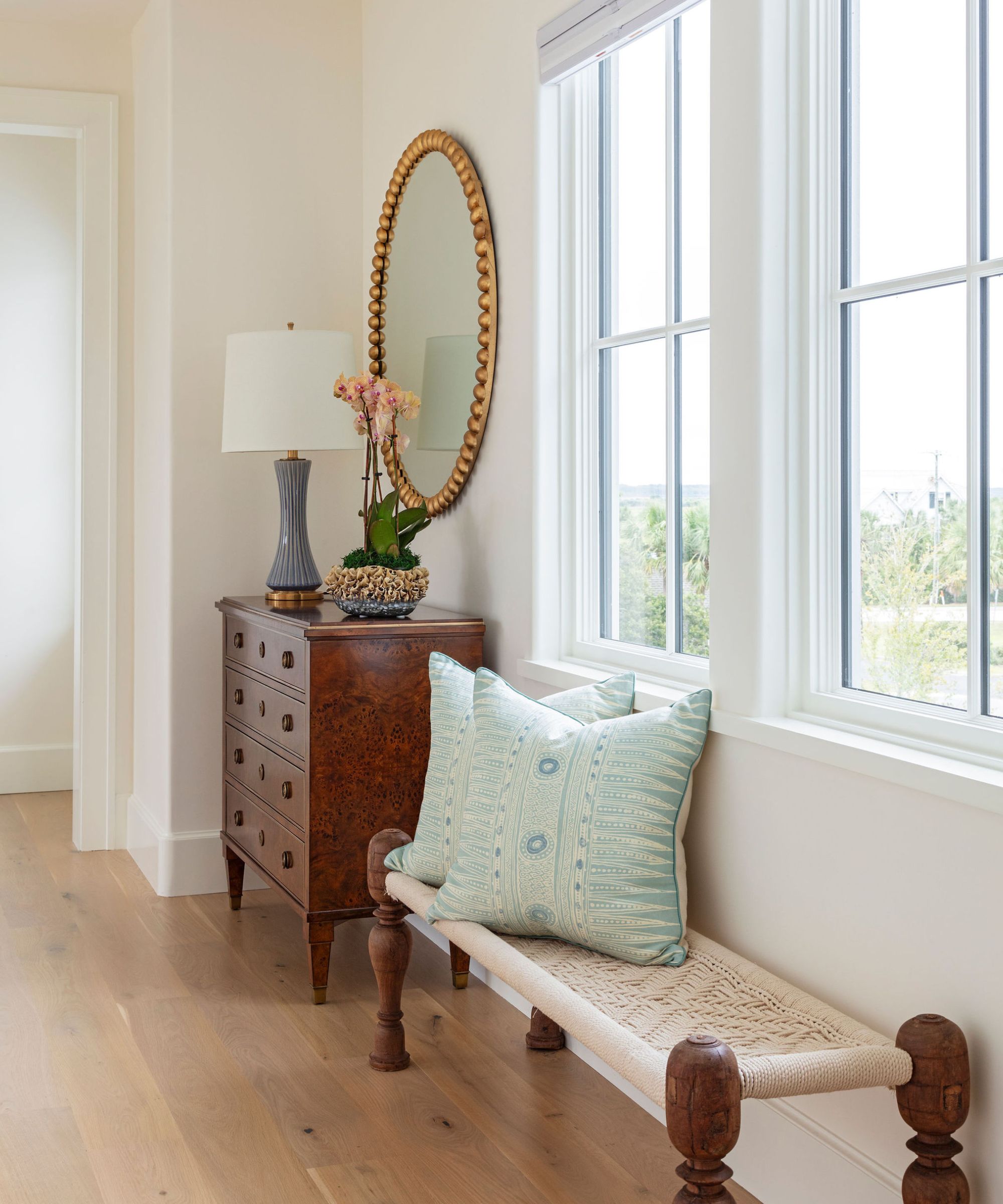
When it comes to this style of decor a sleek and sophisticated style can succumb to coastal decor mistakes and veer into kitschy territory. Literal interpretations of the beach – think seashells and palm tree-themed accessories – feel over the top, and it's important to remember you're designing an entryway, not a themed celebration. If you're inclined to bring in some coastal motifs, Emily suggests bringing in just 'a couple subtle touches.'
'Keep in mind that less is more. Ultimately, the space should feature subtle coastal touches, so that the atmosphere feels inspired rather than kitschy beach or nautical-themed,' says Emily.
Caroline Brackett, principal designer of Caroline Brackett Studio of Design, also says no to 'anchors and other similar kitschy items.' Instead, she suggests focusing on texture, bringing in 'wicker accents, raffia-wrapped consoles, grasscloth wall coverings or sculptural mirrors.'
Along with a durable rug and an 'airy' color palette, your coastal entry will convey the beachy appeal without becoming overkill. In this entryway, pictured above, Caroline paired a dark wood set of drawers with an intricate gold mirror and pops of blue in the form of throw pillows for a contemporary coastal look.
'A lot of times, the coastal theme is translated into colors – sky blue predominantly – or images and objects such as sea shells and fish. I'm a big believer that space is more than the objects it houses,' says Hafsa Burt, founder and lead architect at hb+a Architects.
Hafsa says to focus on the light and setting of a space rather than representations of the ocean or beach. By keeping the space full to the brim with natural light and making sure the room is resilient enough for outdoor activities that trail inside, she says it's much more likely your entryway will remain inviting and serene.
First impressions are important, and your entryway says quite a bit about your style. For a considered and elevated take on coastal decor, make sure you're putting the outdoors first – your environment will never steer you wrong.







